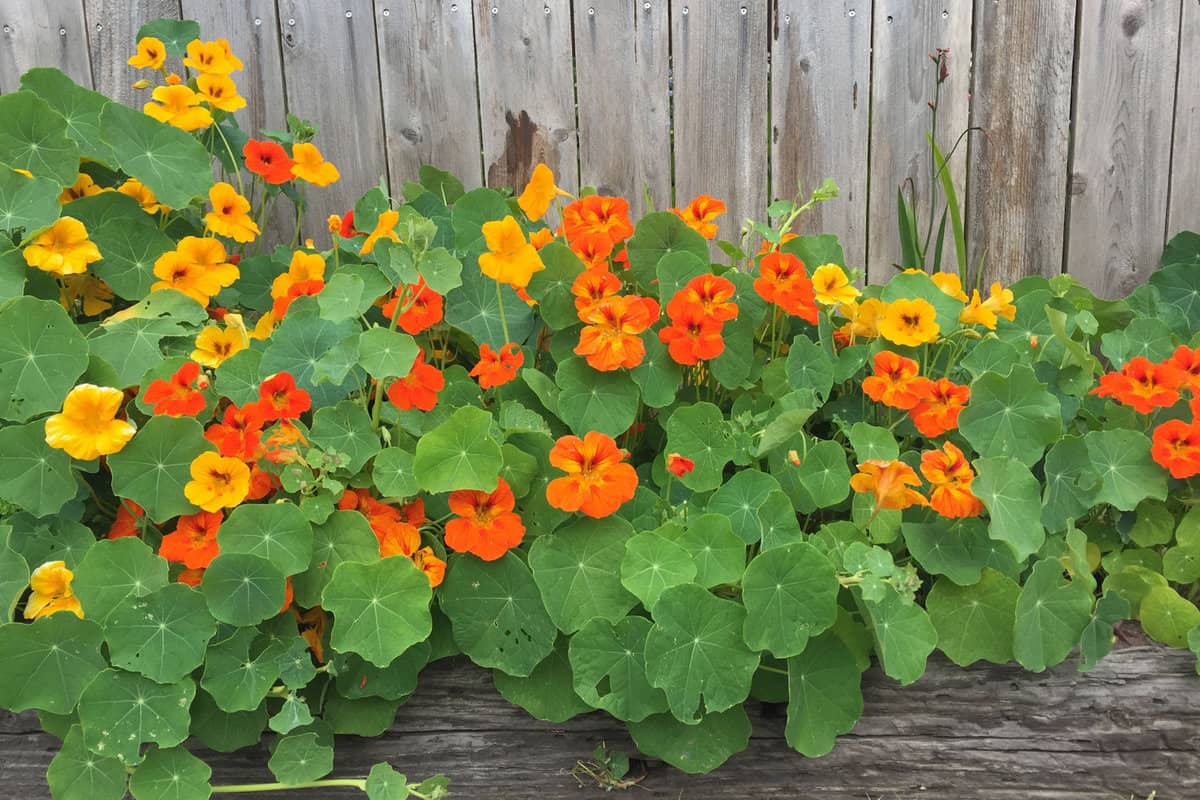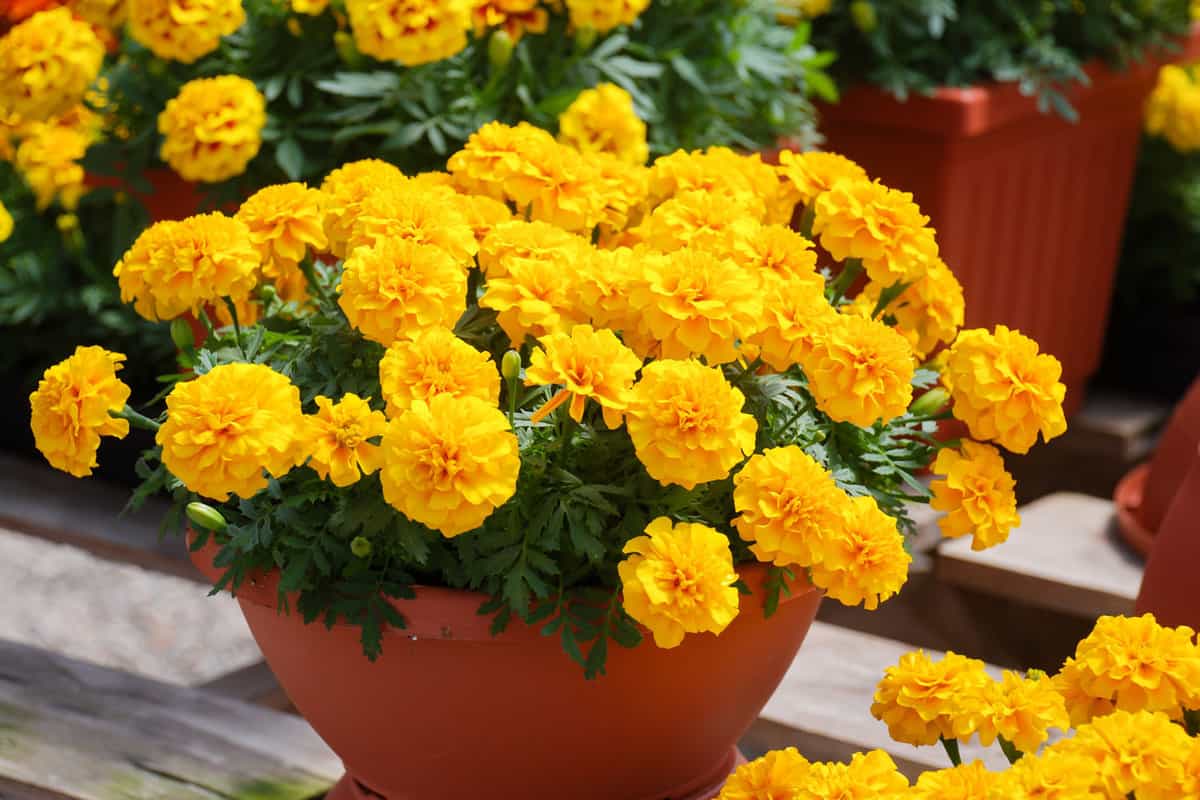Companion planting is an excellent way for your garden to flourish and thrive, particularly when growing pumpkins.
Plants can benefit each other by improving soil fertility, attracting pollinators, and repelling pests.
With the right companion plants, you can boost your pumpkins' overall health and productivity.
Let's explore some great companion plants for your pumpkins to help you maximize their potential in your garden.
Benefits of Companion Planting for Pumpkins
Companion planting can be highly advantageous for your pumpkin plants.
By growing certain types of crops near each other, you can enhance crop production and maintain the balance in your garden.
Here are some benefits of companion planting for pumpkins:
Attracting Pollinators
Flowering plants grown near your pumpkins support bumblebees and other pollinators required for pollinating pumpkin flowers. This encourages better fruit production.
Natural Insect Control
Some companion plants help keep pests away from your pumpkins.
For instance, nasturtiums and marigolds repel destructive insects like squash bugs and cucumber beetles, reducing the need for chemical pesticides.
Improved Soil Health
Certain companion plants, like beans, can fix atmospheric nitrogen in the soil, providing nutrients to your pumpkins.
This enriches the soil and helps your pumpkins grow stronger and healthier.
Increased Space Efficiency
Planting pumpkins with their companion plants efficiently utilizes garden space, allowing you to grow more in a limited area.
This is particularly helpful for home gardeners with space constraints.
Remember to follow guidelines for optimal companion planting. It's advised to plant species with positive relationships within two or three rows of each other.
Ensure plants with negative or detrimental relationships are at least two or three rows apart.
Best Companion Plants for Pumpkins
Pumpkins benefit from being planted near certain other plants, which can help with pest control, soil enrichment, and even improved flavor.
In this section, we'll discuss some of the best companion plants for your pumpkin patch.
Nasturtiums
Nasturtiums are a fantastic choice for a pumpkin companion plant.
These beautiful, edible flowers help keep pests like squash bugs and aphids away from your pumpkins.

Plus, they add a splash of color to your garden and attract beneficial pollinators.
Plant nasturtiums near your pumpkin plants, and you'll enjoy a healthier, more vibrant garden.
View this Nasturtium flower seed mix (1,000) on Amazon.
Beans
Beans are another excellent companion for pumpkins.
They provide multiple benefits, such as fixing nitrogen in the soil, which helps improve pumpkin growth and yield.

Since beans are legumes, they have a symbiotic relationship with certain bacteria that enables them to capture nitrogen from the air and convert it into plant-available forms.
This nitrogen enrichment feeds your pumpkin plants, ensuring they have the nutrients they need to thrive.
Corn
Corn can be a helpful companion plant for pumpkins for several reasons.
First, corn stalks act as natural trellises for pumpkin vines, allowing them to climb and benefiting both plants.

This vertical growth saves space and improves air circulation around the plants, reducing the risk of pests and diseases.
Additionally, the tall corn plants provide shade for pumpkins, helping to keep soil moisture levels consistent during hot summer months.
Check out these sweet corn seeds on Amazon.
Marigold
Marigold flowers are not only lovely to look at, but they're also beneficial as a pumpkin companion.

Marigolds produce a strong scent that deters many common garden pests, including nematodes, beetles, and aphids.
Planting marigolds near your pumpkin patch can significantly improve the health of your pumpkins and leave your garden looking fresh and vibrant.
Get this Tagetes Patula French Marigold on Amazon.
Tomatoes
Pumpkins and tomatoes share similar growing needs, such as plenty of sunlight and consistent moisture levels.
When you plant them together, they can help each other thrive. For example, the large pumpkin leaves can provide a degree of shade for the tomato plants, which can be useful during hot summer days.

At the same time, tomatoes can help attract pollinators and beneficial insects that feed on pests, which is good for the overall health of your garden.
Additionally, both pumpkins and tomatoes require a good amount of nutrients to grow properly.
By planting them together, you can save space and resources, as they can share the same fertilization and watering schedules.
Preparation and Planting Process
If you've decided to do companion planting, here's how to do it.
Choosing the Planting Site
Selecting the right planting site is crucial for successfully growing pumpkins.
Choose a spot with full sun, as pumpkins need a lot of sunlight to grow properly.
Additionally, make sure the site has well-draining soil to prevent root rot and other growth issues.
Consider using raised beds or creating mounds if your garden has poor drainage.
Remember to provide enough space for the vines to sprawl, as they can grow quite long - vining pumpkins require a minimum of 50 to 100 square feet per hill.
Preparing the Soil
Before planting, it's important to prepare the soil by adding organic matter, such as compost or well-rotted manure, to improve its structure and fertility.
It's also a good idea to perform a soil test to determine the specific nutrient needs of your pumpkins.
If you don't have access to a soil test, apply 4-6 pounds of a complete fertilizer like 8-8-8 or 8-24-24 per 100 feet of row 2 weeks before planting.
Be careful not to overfertilize, as it can lead to excessive vine growth without fruit production.
Planting the Seeds
When it's time to plant, sow pumpkin seeds one inch deep in hills, placing four or five seeds per hill.
Allow 5 to 6 feet between hills and space rows 10 to 15 feet apart, providing ample room for vines to grow.
If planting transplants, sow seeds indoors in 3-inch diameter containers 3 weeks before transplanting to allow them to establish proper root systems.
After germination, thin each hill to the best two or three plants to reduce competition and promote optimal growth.
Keep the soil consistently moist, but avoid watering the leaves to prevent fungal infections.
As your pumpkins grow, monitor their progress and keep an eye out for any pests or diseases.
Embracing Companion Planting
In your pumpkin garden, embracing the concept of companion planting can significantly enhance the growth and health of your pumpkins.
By selecting the right plants to grow alongside pumpkins, you not only promote healthier plants but also deter pests and improve the overall productivity of your garden.
For more pumpkin care guides, read here:



